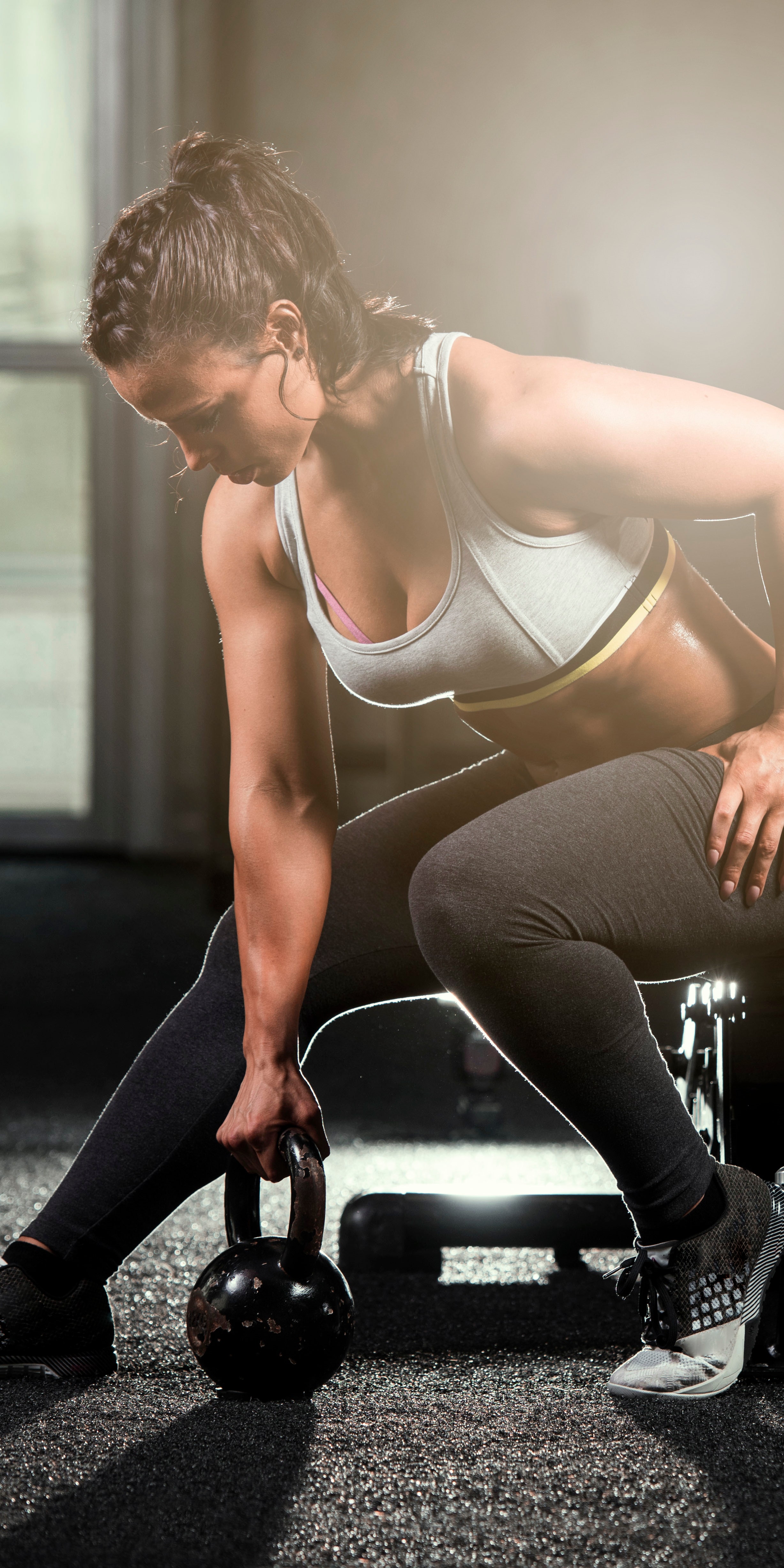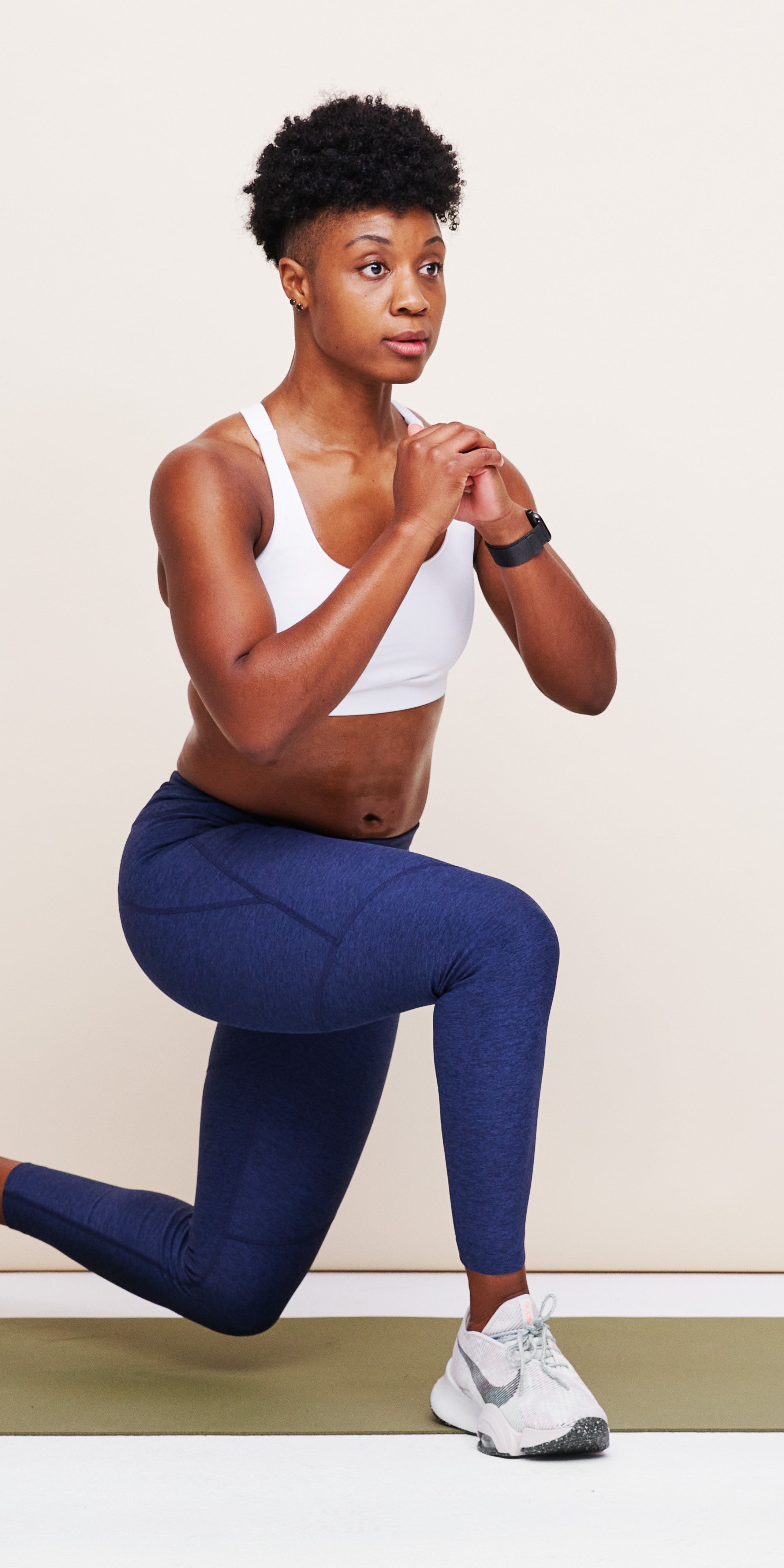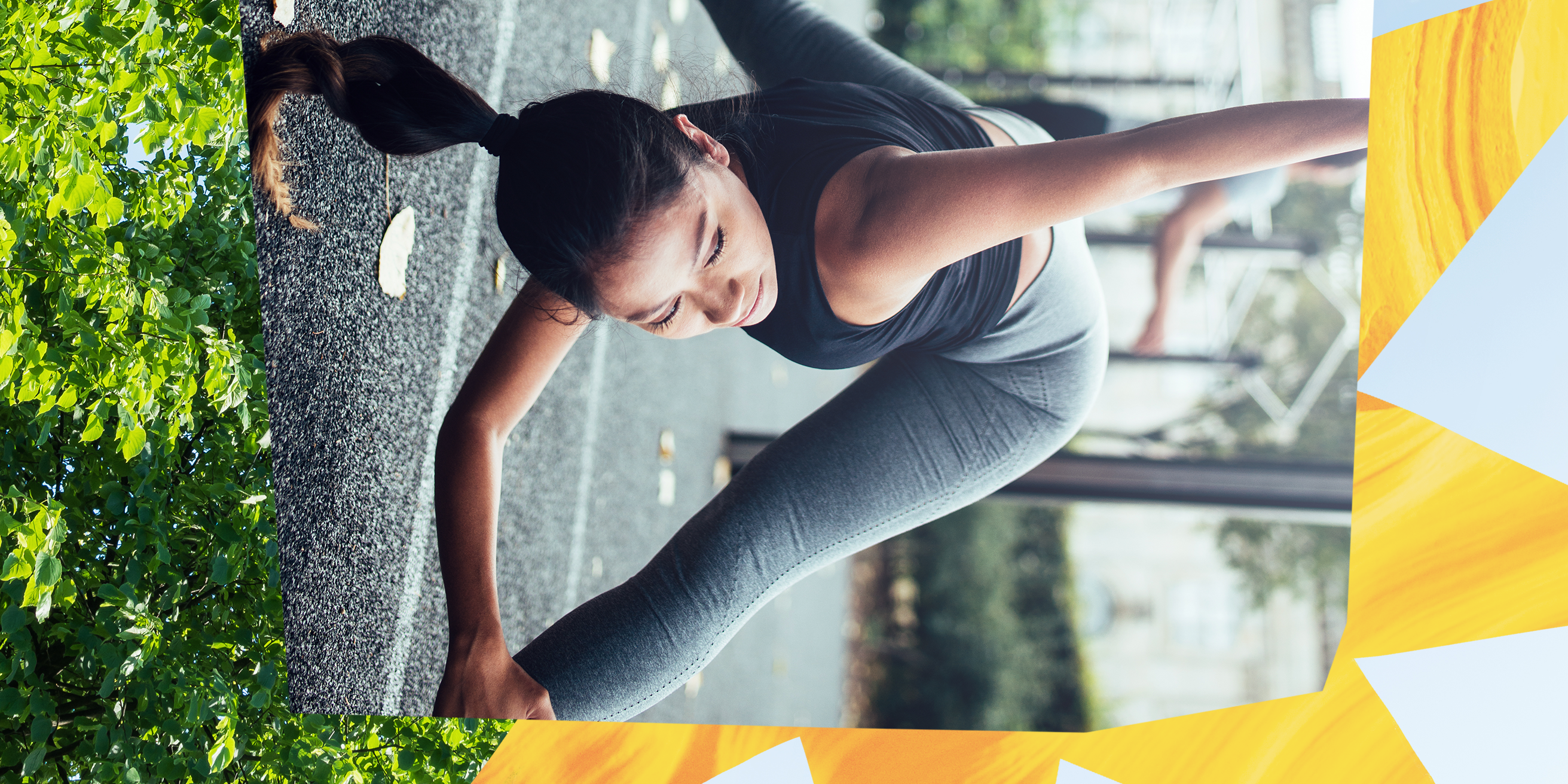Celebrity trainer Simone De La Rue is expecting her first child in March, and in the meantime, she’s sharing her pregnancy fitness journey with the masses on Instagram. The Body by Simone fitness method founder, who has trained Jennifer Garner, Emmy Rossum, and Rosie Huntington-Whiteley, among others, regularly posts workouts on the ‘gram that show just how hard she’s working as her bump grows.
In a recent installment, De La Rue shared a video of a seriously challenging squat series with the hashtag #26weeks (presumably how long she’s been expecting).
“Not only will this series get your heart rate up, but [it will] also challenge your core strength, stability, and balance,” De La Rue writes in the caption.
You can check out the video via @bodybysimone here:
Whether you’re expecting or not, this single-leg series will work pretty much every muscle in your lower half, plus many in your core.
Each move in the three-part series is increasingly more difficult, requiring strength from your glutes, hamstring, quads, calves, inner thighs, and the tendons and muscles supporting your ankle, knee, and hip, Stephanie Mansour, Chicago-based certified personal trainer, tells SELF. And because the movements are all single-leg exercises, which require additional strength and stabilization to stay balanced, there’s also serious core engagement involved, including work from your transverse abdominis (the deepest ab muscle that wraps around your sides and spine), rectus abdominis (what you think when you think abs), obliques (muscles on the sides of your stomach), and erector spinae (muscle along the spine).
If you do the moves with a weight in one hand like De La Rue demos, you’ll amplify the strength demands on your core and lower half, Mansour adds. In addition to the strength and balance challenges, this move can also provide cardio, depending on how fast you perform the reps, James Brewer, NYC-based certified personal trainer and certified Spin and TRX instructor, tells SELF.
The box, an optional element, makes the moves even more challenging.
As De La Rue writes in the caption, you can do these moves with or without a box. Both versions of the moves are challenging, says Brewer, though if you opt for the box, you’ll make the moves even more difficult, explains Mansour. That’s because when performing these moves on the ground as reverse lunge variations, you use the strength of both legs to power through reps (though of course your grounded leg will work harder than your moving leg). The on-the-box variations, on the other hand, isolate the leg that is atop the platform and demand strength from that stationary limb—without any help from your moving limb—to bring your body from the ground all the way up to a balanced, elevated position.
This isolated strength component makes these moves especially great single-leg movements, which can help you identify any differences in strength and/or balance between each leg. Most of us have slight imbalances between both sides of our bodies, and if the imbalance is great enough, it can lead to chronic pain and injury over time, which is why it’s important to identify and correct any severe discrepancies. Doing single-leg moves on the reg, like these weighted squats, can help you keep things even.
Here’s how to do the three-part series:
The below instructions explain how to do the moves with a box and weight, though as mentioned, you can ditch the weight and do a regressed version of these moves as on-the-ground reverse lunges, suggests Brewer.
If you are using a box, start with one around 6 inches in height, recommends Brewer. The taller the box, the more difficult the moves will be. If you don’t have a box, you could use a stair or even a thick book, Brewer adds. When picking a weight, start light. “Because it’s a core exercise and involves balance, you don’t want to jump in with a heavy weight and throw off [your form],” he explains. De La Rue uses a 10-pound kettlebell, though you may want to go lighter or heavier based on your fitness level.
Weighted Squat to Stand
- Hold the weight comfortably in your left hand, and place your right hand on your hip (as De La Rue demos), or reach it straight out to your side at shoulder level.
- Place your right foot firmly atop the box, keeping your feet hip-distance apart.
- Keep your shoulders relaxed, your chest lifted, and your core engaged. This is the starting position.
- Bend your knees and push your butt back to lower into a squat. Make sure your knees don’t drift beyond your toes.
- Press through the heels of both feet and squeeze your inner thighs toward each other as you stand up, lifting your left foot off the ground, bending it at the knee, and tapping your left toes on the box, while totally straightening your right leg.
- Balance for a moment in this position before lifting your left leg up and placing it back on the ground as you sink directly into another squat.
- One squat-to-balance equals 1 rep. Do 10 to 12 reps and then switch sides for another 10 to 12 reps.
- Do 3 sets of 10 to 12 reps on each side.
Most Popular
- 5 Less Obvious Signs of Seasonal Depression You Should Definitely Pay Attention To
By Maggie O’Neill
- 42 Creative Valentine’s Day Gifts for Guys
By Sarah Madaus
- Just Some Fun Sex Toys You and Your Partner Will Love
By Gabrielle Kassel
If you want to use a weight, but find that holding it in one hand is too challenging, hold it with two hands at your chest, suggests Brewer. However you hold the weight, be sure to keep it steady (not swinging) as you perform the reps, adds Mansour.
Weighted Squat to Single-Leg Balance
- Perform the same movement described above, but this time, as you bring your left leg up to the box, engage your core, especially your obliques, and lift your knee up toward your chest.
- Balance here for a moment (don’t let your left foot touch the box) before stepping back down into a squat.
- One squat-to-balance equals 1 rep. Do 10 to 12 reps and then switch sides for another 10 to 12 reps.
- Do 3 sets of 10 to 12 reps on each side.
Perform these reps slow and controlled, focusing hard on your balance and core engagement.
Weighted Squat to Single-Leg Quad Kick-Out
- Perform the same movement described above, though once your left knee is at hip height, hold it there and straighten your leg to kick it out.
- Balance here for a moment (don’t let your left foot touch the box) and then bend your left knee and lower your leg to step down into a squat.
- One squat-to-balance equals 1 rep. Do 10 to 12 reps and then switch sides for another 10 to 12 reps.
- Do 3 sets of 10 to 12 reps on each side.
Of all three moves in the series, this final one delivers the greatest balance challenge and also works the hip flexor on the leg that’s airborne, says Mansour. Think about pressing down through your standing heel and squeezing your glutes for better balance, she suggests.
Incorporate this circuit into your routine for a great core, balance, cardio, and single-leg challenge.








Leave feedback about this